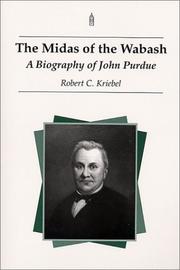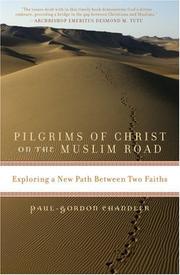Book
Year: 2020 Publisher: California : University of California Press,
Abstract | Keywords | Export | Availability | Bookmark
 Loading...
Loading...Choose an application
- Reference Manager
- EndNote
- RefWorks (Direct export to RefWorks)
In this book, Deborah A. Starr recuperates the work of Togo Mizrahi, a pioneer of Egyptian cinema. Mizrahi, an Egyptian Jew with Italian nationality, established himself as a prolific director of popular comedies and musicals in the 1930s and 1940s. As a studio owner and producer, Mizrahi promoted the idea that developing a local cinema industry was a project of national importance. Togo Mizrahi and the Making of Egyptian Cinema integrates film analysis with film history to tease out the cultural and political implications of Mizrahi’s work. His movies, Starr argues, subvert dominant notions of race, gender, and nationality through their playful—and queer—use of masquerade and mistaken identity. Taken together, Mizrahi’s films offer a hopeful vision of a pluralist Egypt. By re-evaluating Mizrahi’s contributions to Egyptian culture, Starr challenges readers to reconsider the debates over who is Egyptian and what constitutes national cinema.;“ A captivating account of Egyptian film director Togo Mizrahi. Starr shows that Mizrahi’s distinct, often comical vision of Egypt captured a dramatic moment of social, political, and cultural transformation in which people of diverse backgrounds coexisted and struggled to achieve better lives.” Joel Gordon, author of Revolutionary Melodrama: Popular Film and Civic Identity in Nasser’s Egypt;“ A remarkable study of a remarkable career. Starr offers a comprehensive analysis of a life in filmmaking that adds nuance to our definition of Egyptian nationalism and enhances our appreciation of Alexandrian cinema. This is a book of recovery, reclamation, and celebration.” Nancy E. Berg, Professor of Hebrew and Comparative Literature, Washington University in St. Louis.
Multi
ISBN: 9781776147786 9781776147762 1776147782 Year: 2022 Publisher: Johannesburg, South Africa : Wits University Press,
Abstract | Keywords | Export | Availability | Bookmark
 Loading...
Loading...Choose an application
- Reference Manager
- EndNote
- RefWorks (Direct export to RefWorks)
More than one hundred twenty-five years ago, a remarkable group of people came together in Cape Town to write down the language and beliefs of the |xam people, a Bushman group that once lived over much of South Africa. The immensely valuable work of Wilhelm Bleek, Lucy Lloyd and their |xam teachers not only preserved a language now no longer spoken, but also provided fascinating insights into |xam cosmology. First published in 2004, Customs and Beliefs of the |xam reproduces Dorothea Bleek's selection of |xam narratives from the well-known Bleek and Lloyd Collection that was originally published in the journal Bantu Studies during the 1930s. Collated and edited by Jeremy Hollman, the extracts include detailed notes on each of the narratives, as well as Bleek's 'sketch' of |xam grammar.
This substantially revised second edition integrates new scholarship on the Bleek and Lloyd archive, and restores previously omitted material. The introduction to each narrative has been expanded to contextualise it within the archive as a whole and, where relevant, reference it to the Notebook of which it is a part. This includes meticulous cross-referencing with the Bleek and Lloyd Collection catalogue code and the Notebook number and line reference. Each of the texts has also been critically reassessed, with additional editorial notes and commentaries, in particular with respect to the |xam words themselves and the ways in which they have been translated. A synopsis of each narrative is provided in an appendix, with cross references to the Bleek and Lloyd notebooks.
San (African people) --- Civilization. --- Social life and customs. --- Religion. --- Bleek, W. H. I. --- Lloyd, Lucy,
Periodical
ISSN: 21584044 21584052 Year: 2011 Publisher: West Lafayette, IN : Purdue University Press
Abstract | Keywords | Export | Availability | Bookmark
 Loading...
Loading...Choose an application
- Reference Manager
- EndNote
- RefWorks (Direct export to RefWorks)
Undergraduates --- Etudiants de premier cycle --- Research --- Periodicals --- Recherche --- Périodiques --- Purdue University --- multidisciplinary --- Purdue University. --- Indiana. --- Universidade de Purdue --- Danishgāh-i Pird --- Danishg�ah-i Pird�u --- Danishgāh-i Pirdū
Book
ISBN: 1557539030 9781557539038 Year: 2019 Publisher: West Lafayette : Baltimore, Md. : Purdue University Press, Project MUSE,
Abstract | Keywords | Export | Availability | Bookmark
 Loading...
Loading...Choose an application
- Reference Manager
- EndNote
- RefWorks (Direct export to RefWorks)
"Purdue at 150: A Visual History of Student Life by David M. Hovde, Adriana Harmeyer, Neal Harmeyer, and Sammie L. Morris tells Purdue's story through rare images, artifacts, and words. Authors culled decades of student papers, from scrapbooks, yearbooks, letters, and newspapers to historical photographs and memorabilia preserved in the Purdue University Libraries Virginia Kelly Karnes Archives and Special Collections. Many of the images and artifacts included have never been published, presenting a unique history of Purdue University from the student perspective. Purdue at 150 is organized by decade, presenting a scrapbook-like experience of viewing over 400 rare photographs, documents, and artifacts alongside critical contextual information. Each chapter provides a decadal historical sketch of Purdue University, offering insight into the institution's unique culture while incorporating campus responses to major national events such as world wars and the Great Depression. Spotlight sections highlight Purdue firsts, including the first graduates of programs, the growth and development of the international student population at Purdue, the creation of significant student organizations, and the foundations of both old and new campus traditions"--
Purdue University --- History. --- Students --- Students. --- Pupils --- School life --- Student life and customs --- Persons --- Education --- Purdue University. --- Danishgāh-i Pird --- Indiana. --- Universidade de Purdue --- Danishg�ah-i Pird�u --- Danishgāh-i Pirdū

ISBN: 155753926X 9781557539267 1557539251 1557532877 Year: 2019 Publisher: Purdue University Press
Abstract | Keywords | Export | Availability | Bookmark
 Loading...
Loading...Choose an application
- Reference Manager
- EndNote
- RefWorks (Direct export to RefWorks)
The Midas of the Wabash is a biography of noted businessman John Purdue (1802-1876), whose donations of time and money led to the founding of Indiana's land grant university, Purdue University, in 1869. Purdue also contributed to economically important bridge, railroad, and cemetery construction, the existence of Lafayette Savings Bank and the Battle Ground Collegiate Institute, cattle farming, Lafayette's public school system, and countless other worthy enterprises. This is the first published full length study of Mr. Purdue's life and work beyond casual street-talk that portrayed Purdue as a difficult individual with whom to work. This biography incorporates research efforts by previous writers with facts gleaned from newspaper coverage, official documents, and a few rare samples of Mr. Purdue's letters. In this way, a complete picture of the man and myth is generated.
Purdue, John, --- Purdue University --- Benefactors --- E-books --- BIOGRAPHY & AUTOBIOGRAPHY / Business --- Benefactors. --- Donors (Benefactors) --- Patrons (Benefactors) --- Persons --- Philanthropists --- Purdue University. --- Danishgāh-i Pird --- Indiana. --- Universidade de Purdue --- Biography: business & industry --- Danishg�ah-i Pird�u --- Danishgāh-i Pirdū
Book
ISBN: 1783320842 Year: 1992 Publisher: [Washington, D.C.] : The Service,
Abstract | Keywords | Export | Availability | Bookmark
 Loading...
Loading...Choose an application
- Reference Manager
- EndNote
- RefWorks (Direct export to RefWorks)
This site provides access to reports on animal health and management prepared by the APHIS Veterinary Services' Centers for Epidemology and Animal Health, Fort Collins, CO and the uniform methods and rules issued by APHIS Some publications available in PDF.
Technical writing --- Engineering --- Science --- Scientific writing --- Technology --- Authorship --- Communication of technical information --- United States. --- A.P.H.I.S. --- APHIS
Book
ISBN: 1640124381 1640124403 164012313X 9781640124400 Year: 2021 Publisher: Lincoln : Potomac Books,
Abstract | Keywords | Export | Availability | Bookmark
 Loading...
Loading...Choose an application
- Reference Manager
- EndNote
- RefWorks (Direct export to RefWorks)
"Iran's Islamic Revolutionary Guard Corps increasingly poses an existential threat to Western security and to Sunni and the few non-Muslim civilizations remaining in the Middle East. Empire of Terror captures this. It will update current academic literature and provide insights gained from the Author's 35 years as an analyst in the U.S. Defense Intelligence Community"--
Sipāh-i Pāsdārān-i Inqilāb-i Islāmī (Iran) --- Iran --- History --- Military policy.
Book
Year: 1970 Publisher: [Teheran] : Dept. of Publications, Ministry of Art and Culture,
Abstract | Keywords | Export | Availability | Bookmark
 Loading...
Loading...Choose an application
- Reference Manager
- EndNote
- RefWorks (Direct export to RefWorks)
Book
Year: 2020 Publisher: California : University of California Press,
Abstract | Keywords | Export | Availability | Bookmark
 Loading...
Loading...Choose an application
- Reference Manager
- EndNote
- RefWorks (Direct export to RefWorks)
In this book, Deborah A. Starr recuperates the work of Togo Mizrahi, a pioneer of Egyptian cinema. Mizrahi, an Egyptian Jew with Italian nationality, established himself as a prolific director of popular comedies and musicals in the 1930s and 1940s. As a studio owner and producer, Mizrahi promoted the idea that developing a local cinema industry was a project of national importance. Togo Mizrahi and the Making of Egyptian Cinema integrates film analysis with film history to tease out the cultural and political implications of Mizrahi’s work. His movies, Starr argues, subvert dominant notions of race, gender, and nationality through their playful—and queer—use of masquerade and mistaken identity. Taken together, Mizrahi’s films offer a hopeful vision of a pluralist Egypt. By re-evaluating Mizrahi’s contributions to Egyptian culture, Starr challenges readers to reconsider the debates over who is Egyptian and what constitutes national cinema.;“ A captivating account of Egyptian film director Togo Mizrahi. Starr shows that Mizrahi’s distinct, often comical vision of Egypt captured a dramatic moment of social, political, and cultural transformation in which people of diverse backgrounds coexisted and struggled to achieve better lives.” Joel Gordon, author of Revolutionary Melodrama: Popular Film and Civic Identity in Nasser’s Egypt;“ A remarkable study of a remarkable career. Starr offers a comprehensive analysis of a life in filmmaking that adds nuance to our definition of Egyptian nationalism and enhances our appreciation of Alexandrian cinema. This is a book of recovery, reclamation, and celebration.” Nancy E. Berg, Professor of Hebrew and Comparative Literature, Washington University in St. Louis.

ISBN: 128249709X 9786612497094 0742566048 9780742566040 9781561013173 156101317X 9780742566033 074256603X 9781561013197 1561013196 6612497092 Year: 2007 Publisher: Lanham, Md. : Cowley Publications,
Abstract | Keywords | Export | Availability | Bookmark
 Loading...
Loading...Choose an application
- Reference Manager
- EndNote
- RefWorks (Direct export to RefWorks)
Paul-Gordon Chandler presents fresh thinking in the area of Christian-Muslim relations, showing how Christ_whom Islam reveres as a Prophet and Christianity worships as the divine Messiah_can close the gap between the two religions. He illustrates his perspective with examples from the life of Syrian novelist Mazhar Mallouhi, who seeks to bridge the chasm of misunderstanding between Muslims and Christians through his novels.
Islam --- Christianity and other religions --- Relations --- Christianity. --- Islam. --- Jesus Christ --- Mallūḥī, Maẓhar. --- Islamic interpretations.

 Search
Search Feedback
Feedback About UniCat
About UniCat  Help
Help News
News